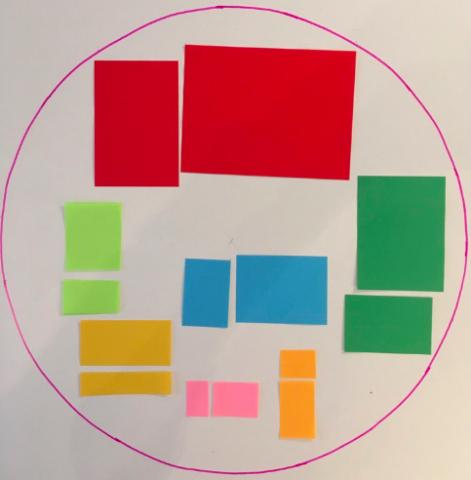What do you see here?
Problem
What do you notice about the objects inside the circle?
Can you explain your thinking?

Student Solutions
Anna from an unknown school in Canada sent in her views
i think that all of the shapes are a rectangle but they are cut into different shapes and sizes.
Shaurya from the United World College of South East Asia East Campus in Singapore
wrote that each square 2/3 and 1/3s
Giles also from the United World College of South East Asia East Campus Singapore, Tampines
saw it that each square is separated into 1/3 and 2/3'ds
Teachers' Resources
Why do this problem?
This activity offers free exploration which will help learners develop a deep understanding of halves and halving. The task gives a context in which to discuss the importance of the part-whole relationship of fractions so that children realise halves can be different sizes, depending on the whole.
Possible approach
This task is ideal for a whole class or small group setting. Sit learners round in a circle and place the 'pieces' in the middle rather like they are shown in the activity. The coloured rectangles in the picture can be made from an A2 piece of paper and its half, a different coloured A3 sheet and its half, and so on. You can also add sheets of other sized paper and their halves, even down to a
postage stamp sized piece with its half.
Simply prompt the children with "what do you see?" and suggest that they have a think on their own for a few minutes, then share ideas with a partner. You can then facilitate a whole group discussion.
Key questions
So what do you see?
What do others think of what [insert name] sees?
Possible support
There may be some who need help with using appropriate vocabulary to explain their thoughts. One way to help address this is to note down words on the board that you overhear other pairs using in the intial discussion. Those who are struggling to voice their thoughts can then 'magpie' words from the board list. You might like to have a go at the task Paper Halving before trying this one.
